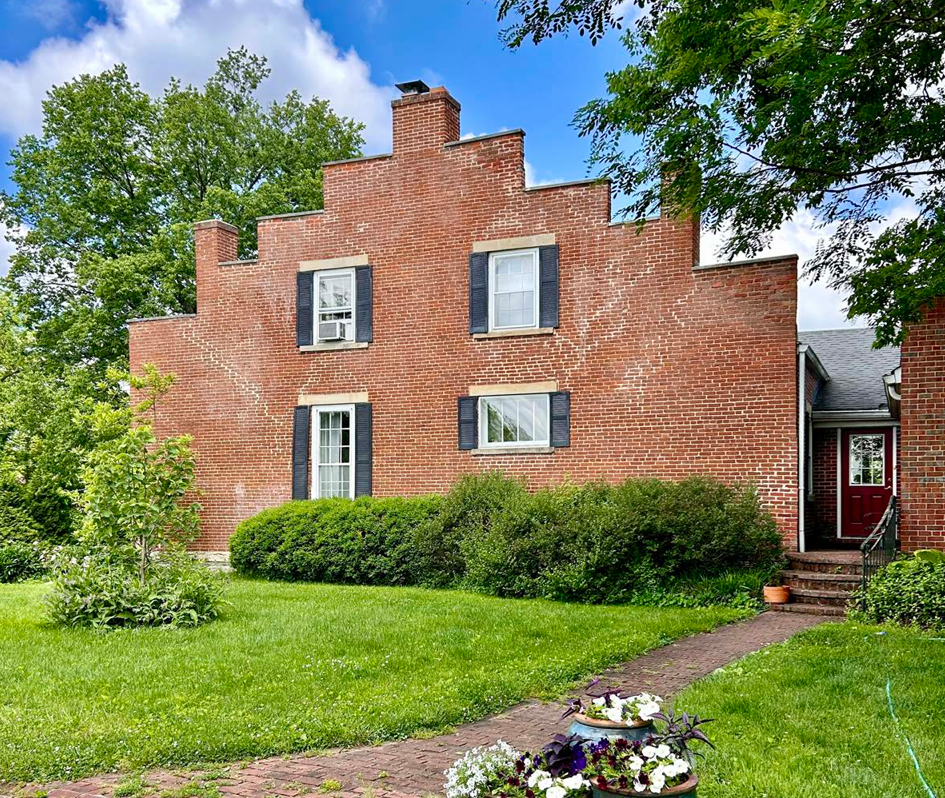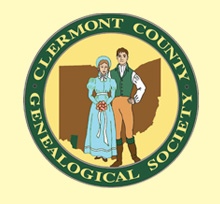47th Annual Heritage Day Luncheon
On September 7th CCGS hosted our 47th Heritage Day Luncheon. This year’s Luncheon was held at the Terrace Park Country Club and marked a Society first. The Luncheon was held as a hybrid event with our online guests joining after lunch, a total of 37 people joined us for the Luncheon.
This year featured a lovely portrayal by Joyce Lovins-Browning of Cynthia Charlotte (Lottie) Moon Clark. Her presentation of Lottie’s life, family, and career as a Confederate spy was very educational and entertaining.
There are several people and groups who we would like to thank for making this event possible.
To our sponsor: Members of Daughters of the American Revolution – America 250!
To our donors: Harmony Hill Vineyard in Bethel, Ohio, Mary Allen, Carol Brown, Paige Craig, Marcia and Mike Jelus, Mark Peterson, and Pam Smith.
To our volunteers who helped with the event: Mary Allen, Brenda Boyd, Paige Craig, Jude DeWitt, Debby Geesner, Judith Malinzak, and Shelley Nuss.
To Kyle Echols, from Shadylake Media, for our audio-visual needs.
This year had two new ancestors inducted. Congratulations to Brenda Barrett and Pamela Kellum Smith for all their research and hard work.
|
2024 Century Families of Clermont County
|
|
CF #
|
Member
|
Ancestor #
|
Name
|
Year
|
From
|
|
8
|
Brenda Barrett
|
16
|
Mildred Frances Legner
|
1920
|
Kentucky
|
|
2024 Civil War Families of Clermont County
|
|
CWF #
|
Member
|
Ancestor #
|
Name
|
Unit
|
Service Dates
|
|
2
|
Pamela Kellum Smith
|
10
|
Isaiah Doughman
|
78th Ohio Infantry, Co. K, 146th Ohio Infantry, Co. G
|
27 Sept 1862-30 Apr 1865
|
Salt Family
Excerpts from the newsletter article, The Clermont Family Album by Patricia Salt Edward
 Salts, or Salt, was the first of my Salt family line to emigrate to the New World, coming we believe from England. Exactly where he came from, and when he came here, are brick walls in my research of this family. I have been searching for Edward’s origins and marriage in England for more than thirty years with no success. There is some evidence that he was in Virginia by 1775-1779. There is a survey done for land for a neighbor that refers to Edward Salts, and this survey was dated between 1775 and 1779. This time frame also supports the likely estimated birth years for the Salts daughters. In addition, Edward, with several others, was given a certificate showing that they had provided wheat to the State of Virginia dated 24 October 1780. This was done to help provide aid to the Army. Sometime between late 1789 and 1793 he and the family moved west to Kentucky and later to Clermont County. Edward and Mary had five children who migrated west with them in the early 1790s to Kentucky: Innocent, Elinor, Elizabeth, John, and Edward. These children were born in Virginia between about 1776 at the earliest and 1790 at the latest. Edward and his wife Mary have been very tricky to find, showing up primarily in land deeds, although Edward also appears in tax records and in some court records, all in Kentucky. They likely did not ever live in Clermont County although their children did. Edward, the father, died between July 1813, when he was granted a ferry license in Kentucky, and 17 Oct 1813 when his sons entered his estate into probate in Clermont County. Mary died after August 1798 when she signed a deed in Bracken County, Kentucky. The family surname was varied between Salt or Salts during the earliest Virginia and Kentucky/Ohio days. John Salt or Salts was my direct ancestor who settled in Clermont County. John Salt was born about 1783 in Virginia. The family migrated to Kentucky between about 1790-1793, and John’s older sisters started marrying soon thereafter. Innocent married William Frazier in Bourbon County Kentucky, in 1794 with Edward’s permission. Elinor or Nellie married John Wharton in 1797 in Mason County Kentucky. The youngest (presumably) daughter, Elizabeth or Betsy married Samuel Meranda as his second wife in 1806 with the consent of her father Edward. John and his brother Edward were younger and didn’t marry until 1809 or after. John married first, Nancy Donovan, daughter of Daniel Donovan and wife Elizabeth in Kentucky in late November 1809. Edward married first, Priscilla Conrey daughter of John Conrey and wife Sarah (date and place not known). In 1818 John and his brother Edward bought the tract of land in Clermont County on which John built a house for his family and where he lived for the rest of his life. This was a tract they bought from Col. James Madison of Virginia. It was originally land warranted to Revolutionary War veterans that passed through several hands before the Salt brothers purchased it. John likely built the first house in the late 1820s, showing up in the 1830 federal census in Tate Township, where he continued to appear in censuses until his death. I speculate that the original house was likely built of wood, based on a short news report in December 1842 that his house had burned to the ground while the family was at church. It was a significant loss to him. More of this story and its sources as well as an article about the Salt House with photos is cited in the Clermont County Genealogical Society newsletter for August 2024.
Cemetery Records
We now have 45,113 burials from 145 Clermont cemeteries on our website. Thanks to the Cemetery Committee Volunteers, Pat Dudek, Alyssa Dugan, and Mark Peterson, Chair, for continuously adding to this collection.
The records include cemetery photos and inscriptions that had been posted on our old website. Added to these records are inscriptions for stones which could not be found by CCGS volunteers when photographing the cemetery, but are in the 1950 era book Monument Inscriptions Prior to 1900 from Cemeteries in Clermont County, Ohio, Copied by Beech Forest Chapter, Daughters of the American Revolution. CCGS obtained permission from the Mariemont Chapter of the Daughters of the American Revolution (who retain the property of the dissolved Beech Forest Chapter DAR) to include those inscriptions. Burials with the notation regarding the book where the inscription came from are also included for the all cemeteries.
If you are logged in as a member you can search the data base a few different ways:
County/Region – Choose the township and all burials in that township will be returned.
Cemetery – Choose the cemetery and all burials in that cemetery will be returned.
Surname – Type the surname and all entries with that name will be returned. (Leaving this blank will return all records.)
Or, you can combine the surname with the township or cemetery.
Let us know if you find any broken links or data which you believe may be incorrect by emailing webmaster@ccgsoh.org. Check back often for additional burials.
We Are Thrilled to Announce the Reprinting of
The Clermont County, Ohio 1980, A Collection of Genealogical and
Historical Writings Volume One.
Many CCGS Members submitted family histories and photos to be used in the book.
The indexed 315 page book has been out of print for many years. CCGS is collaborating with the Warren County Genealogical Society to reprint it!
Check to see if one of the surnames you are researching is in the book by searching this index.
If you wish to order the book and have it shipped to you, you can go to the online STORE page at left or mail a check to: Clermont County Genealogical Society,
PO Box 394,
Batavia, Ohio, 45103
The CCGS Library
Thanks to Amy & Chris and the staff of the CCPL
Doris Wood Branch for their interest, support and help.
And, for helping members and non-members with their
research. And for the new signage and our Indian Trails
map on the wall.
And to our CCGS Librarian, Marcia Jelus, our past
Librarian Kathy Payne and other volunteers for making
a so, so much more organized space. For cataloging,
repairing, getting donations in the system and on the
shelves and more....
What a great job !!!
Walking In
Microfilm, Microfilm reader, computer, etc.
Books, books amd more books
Obituaries
More and more obituaries are added daily to the "Area Deaths" page. This can be very helpful in your research.
As of 1 October 2024, there are 25,757 entries.
Thanks to Kathy Payne, Stacie Ishmael, and Pat Dudek. Their progress is amazing! Kathy estimates the project is 80-85% complete.
Kroger Community Rewards
It is time to sign up for the new year of Kroger Community Rewards! Please show your support for CCGS by signing up today.
It costs you nothing to sign up and it does not take away any of your fuel points.
Kroger will be ending the requirerment that you re-register every year. Register or re-register this year and you will not need to register again
There is no expense to you!!
|
|
November 2
CCGS Board Meeting
If you would like to attend, please contact us by the day before the meeting at info@ccgsoh.org or by calling (513) 723-3423, so we can email an invitation.
|
|
November 2
Find, Copy, or Steal?
Come to the library to meet in person or use the information in your emailed invitation to meet via your telephone or device. Presenter: Kent Roberts, Archivist/local church historian of Highland Park United Methodist Church in Dallas, Texas. He has a JD - law, University of Missouri-Columbia, School of ...
|
|
December 7
Member Show and Tell
Come to the library to meet in person or use the information in your emailed invitation to meet via your telephone or device. Those attending in person are invited to bring a treat to share. Beverages will be provided. Presenter: Various members of Clermont County Genealogical Society Program ...
|
|
January 4
Orphan Trains and the Children Who Rode Them
Come to the library to meet in person or use the information in your emailed invitation to meet via your telephone or device. Presenter: Karen Fortin Karen Fortin received a Bachelor's Degree in History and a Master's Degree in Library and Information Science from the University of South Florida. ...
|
|
February 1
CCGS Board Meeting
If you would like to attend, please contact us by the day before the meeting at info@ccgsoh.org or by calling (513) 723-3423, so we can email an invitation.
|
|
February 1
Scottish Immigration to America
Come to the library to meet in person or use the information in your emailed invitation to meet via your telephone or device. Presenter: Scott Norrick He has over 30 years of genealogical experience tracing and documenting thousands of ancestors and relatives. He has an undergraduate degree from the ...
|
|



